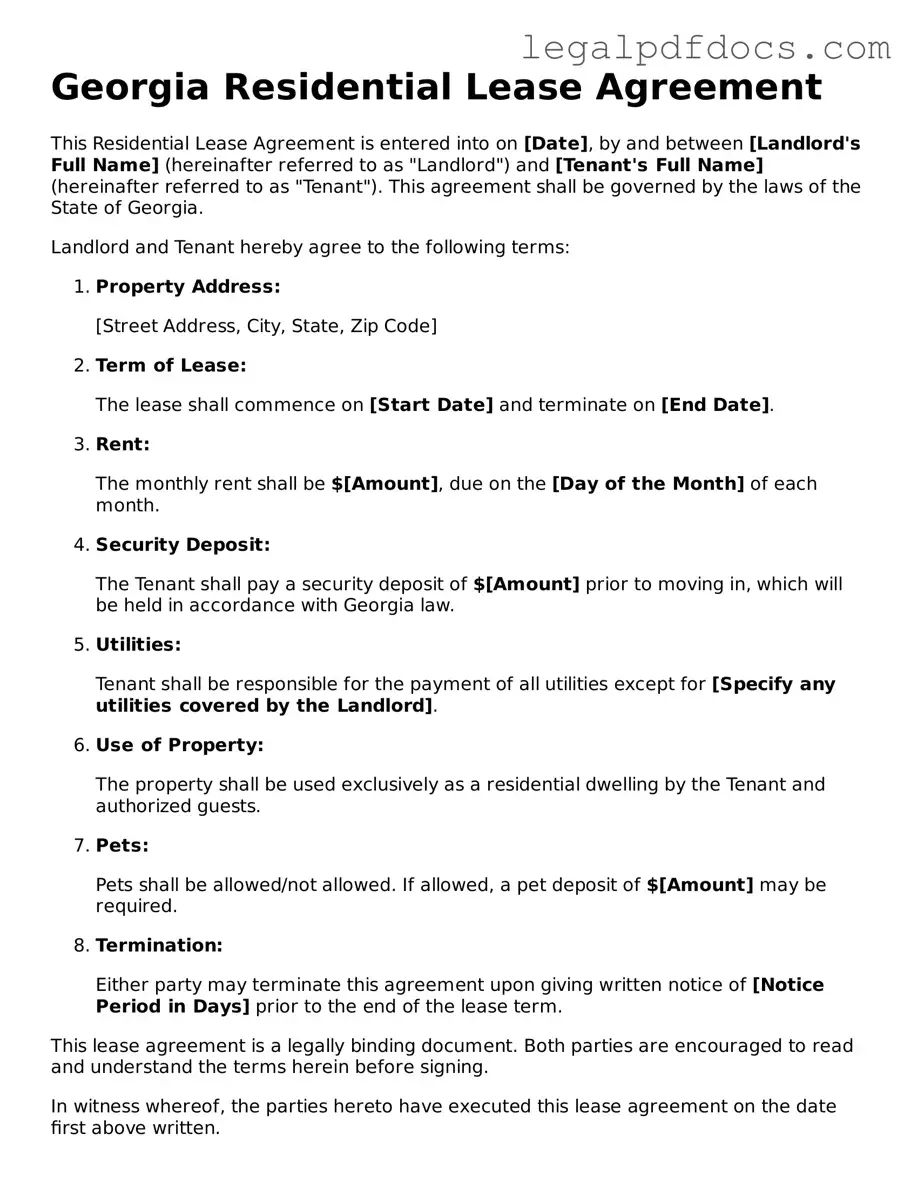The Georgia Residential Lease Agreement form serves as a crucial document in the landlord-tenant relationship, outlining the rights and responsibilities of both parties involved in a rental arrangement. This comprehensive agreement typically includes essential details such as the rental property’s address, the duration of the lease, and the monthly rent amount. Additionally, it specifies the security deposit requirements and conditions under which it may be withheld. Important provisions regarding maintenance responsibilities, utilities, and rules governing the use of the property are also included. The agreement addresses termination conditions, renewal options, and the process for resolving disputes, ensuring clarity and protection for both landlords and tenants. By establishing clear expectations, this form helps to prevent misunderstandings and promotes a harmonious living situation. Understanding the key components of the Georgia Residential Lease Agreement is vital for anyone entering into a rental contract in the state.
